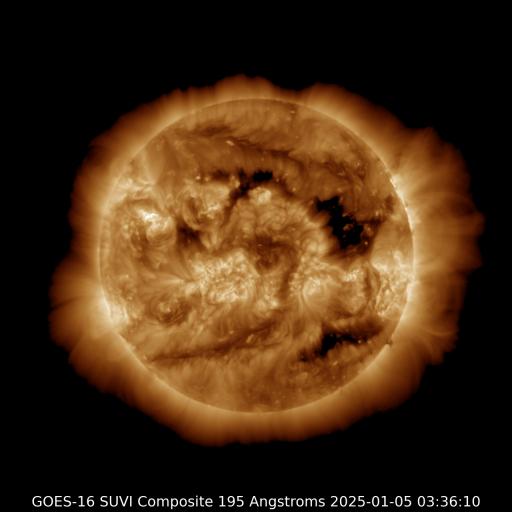Viewing archive of Thursday, 29 January 2015
Daily bulletin on solar and geomagnetic activity from the SIDC
Issued: 2015 Jan 29 1231 UTC
SIDC Forecast
Solar flares
Active (M-class flares expected, probability >=50%)
Geomagnetism
Active conditions expected (A>=20 or K=4)
Solar protons
Warning condition (activity levels expected to increase, but no numeric forecast given)
| 10cm flux | Ap | |
|---|---|---|
| 29 Jan 2015 | 165 | 008 |
| 30 Jan 2015 | 170 | 018 |
| 31 Jan 2015 | 173 | 015 |
Bulletin
NOAA 2268 and NOAA 2277 dominated the flaring activity, producing a total of 11 C- and 2 M-class flares over the period. The strongest flare was an M2.1 flare peaking at 11:42UT. Further data and imagery are required to assess any related CME. NOAA 2277 also produced an M-class event: the impulsive M1.0 flare peaked at 21:37UT. No earth-directed CMEs have been observed. Both NOAA 2268 and NOAA 2277 show mixed magnetic polarities. The x-ray background flux was mostly above the C1-level. The greater than 10 MeV proton flux is enhanced, probably in response to the M1.4 flare from 28 January. With a maximum of 0.7 pfu, it stayed well below the proton event threshold. Further M-class flaring is expected. Solar wind speed started the period varying between 420 and 450 km/s, but gradually declined towards values between 360 and 400 km/s. Bz was initially very close to 0 nT, but varied between +4 and -5 nT by the end of the period. Geomagnetic conditions were quiet. Further disturbances in the the solar wind are possible from other CH HSS and a possible glancing blow on 30 January from the 24 January CME. The extension of a southern polar CH is currently at the CM and is expected to influence the geomagnetic field around 01 February. The geomagnetic field is expected to range from quiet to active conditions.
Today's estimated international sunspot number (ISN): 112, based on 09 stations.Solar indices for 28 Jan 2015
| Wolf number Catania | /// |
| 10cm solar flux | 159 |
| AK Chambon La Forêt | 012 |
| AK Wingst | 008 |
| Estimated Ap | 007 |
| Estimated international sunspot number | 106 - Based on 13 stations |
Noticeable events summary
| Day | Begin | Max | End | Loc | Strength | OP | 10cm | Catania/NOAA | Radio burst types |
|---|---|---|---|---|---|---|---|---|---|
| 28 | 2132 | 2137 | 2140 | N08E73 | M1.0 | SF | --/2277 | ||
| 29 | 1132 | 1142 | 1152 | S06E22 | M2.1 | SF | 73/2268 |
Provided by the Solar Influences Data analysis Center© - SIDC - Processed by SpaceWeatherLive
All times in UTC
Current data suggests there is a slight possibility for aurora to appear at the following high latitude regions in the near future
Gillam, MB, Iqaluit, NUNuuk
Reykjavik
Latest news
Latest forum messages
Support SpaceWeatherLive.com!
A lot of people come to SpaceWeatherLive to follow the Sun's activity or if there is aurora to be seen, but with more traffic comes higher server costs. Consider a donation if you enjoy SpaceWeatherLive so we can keep the website online!

Latest alerts
00:55 UTC - Coronal hole
A southern hemisphere coronal hole is facing Earth. Enhanced solar wind could arrive in ~3 days
Monday, 7 April 2025
20:45 UTC - Geomagnetic activity
Active geomagnetic conditions (Kp4) Threshold Reached: 20:39 UTC
17:33 UTC - Hemispheric Power Index
The OVATION model predicts the Hemispheric Power Index to reach 51GW at 18:18 UTC
Space weather facts
| Last X-flare | 2025/03/28 | X1.1 |
| Last M-flare | 2025/04/05 | M1.0 |
| Last geomagnetic storm | 2025/04/06 | Kp5 (G1) |
| Spotless days | |
|---|---|
| Last spotless day | 2022/06/08 |
| Monthly mean Sunspot Number | |
|---|---|
| March 2025 | 134.2 -20.4 |
| April 2025 | 148.7 +14.5 |
| Last 30 days | 134.1 -5.6 |




